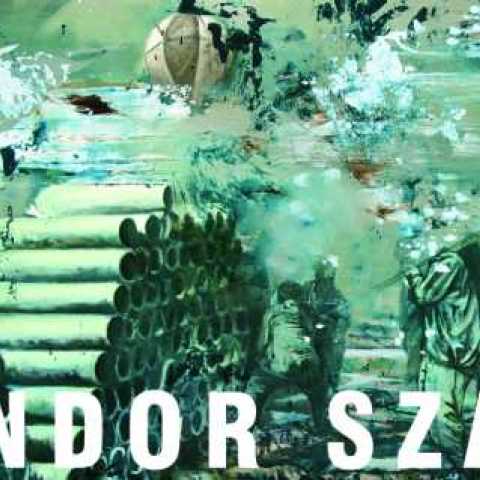The Concept Space
7 Spa Road
London
SE16 3QP
United Kingdom

The Concept Space is pleased to present works by Sándor Szász. The exhibition, Szász's first ever showing in the United Kingdom, includes recent body of work together with a rare installation. It is a transposition of the artist memory and vision of an environment changed forever by the impact of human actions.
"The Dawn After Yesterday" looks at the aftermath of a catastrophe of the past or maybe that of the future by blurring the boundary between history, fact and fiction, surreal and real, memory and imagination, past and future, suffering and salvation, struggle and freedom in exploring the fact memory is identity.
Szász's paintings depict scenes of ruins, deserts, flooded lands and machines all having social and political symbolism. The conflicting personal and social identity emphasised by the faceless workers and inhabitants. We see balls and balloons symbolising a new order or ideology promising a collective consciousness.
In "The Rise of the New Dawn" (2016), we see holey balls of hope and gigantic systems above faceless humans as they toil within the ruins of cables and murky muddy waters of the floods trying to salvage something of life. Then in "Shadow Hunters" (2016), once again faceless beings collectively recover and preserve holey tubes from the ruins as the hot air balloons of authority and hope circle round, looking from high above. The tones and hues are so effective in these compositions which serves up a dream and bitt er awakening in equal measures.
Without being the messenger of doom but rather holding up a mirror from the past to question of the likely possibility of an impending apocalypse in future as a result of human actions. The struggle between man and machine is highlighted with the gigantic representation, on occasions as extra-terrestrials on earth.
Along side the works of painting, is a rare showing of a new installation piece drawing from elements or scenes depicted in some of the painting narratives. An imaginary scene frozen in time as oil drums painted in his signature holes (holey balls) that never pierce through the other side but into an unknown void are mounted on thin elongated stilts that remind us of a desolate town. Original helmets from the First (WWI) and Second (WWII) World War with rusted holes suspended from the ceiling leave us with a ghostly state of unease as we wonder what it would have been like. This forces the viewer to confront our mortality and actions of the past. Original crumbling mud covered barbed wire from the battlefront of the First World War (WWI) and anti -tank hedgehogs imitations are used to suggest fortification and obstacle that belong to a world we can no longer defend. All of this is Szász once again, weaving history and fiction into a single frozen frame for the viewer's reflection and contemplation.
Sándor Szász was born in 1976 in Tirgu-Mures, Transylvania, Romania but now Lives and works in Budapest,Hungary. He studied at Hungarian Academy of Fine Arts, Budapest, Hungary, has won numerous prizes for painting including works in Museums collections and continues to exhibit internationally.
